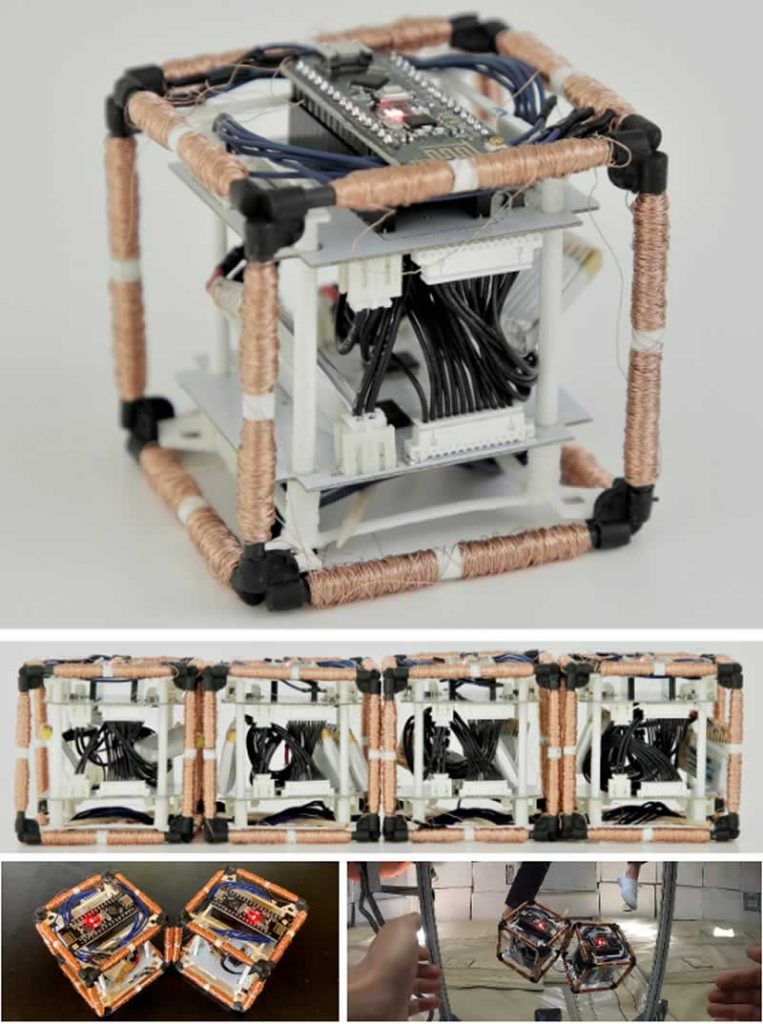Researchers from the Computer Science and Artificial Intelligence Laboratory (CSAIL) at the Massachusetts Institute of Technology (MIT) and the University of Calgary in Canada have developed a system of modular robots that can be organized in different ways.
They are called ElectroVoxels in reference to voxels, which are volumetric pixels. ElectroVoxels are self-configuring robotic cubes that come together semi-autonomously to create larger objects, and that would serve as moldable tools in space. They have no motors or moving parts. Instead, they use electromagnets to cross each other.
The ElectroVoxel cubes have a side length of about 60 millimetres that consist of magnets made up of a ferrite core wrapped in copper wire, and the production price per piece is just 60 cents. Inside each cube, researchers housed a microcontroller and integrated circuits that send electricity in the correct direction through the correct electromagnet.
In addition, the researchers created software that allows control of up to a thousand cubes with a few clicks, being able to alter the speed and avoid collisions. ElectroVoxels simultaneously uses a wireless communication system to communicate with the software.
These little cubes have been put to the test on the famous “Vomit Comet”, the NASA plane where researchers test their projects in zero gravity. With the freedom that lack of gravity brings, it reduces reliance on fuel and thus addresses challenges related to launching mass and volume.
Unlike traditional hinges that require mechanical connections between two elements, the ElectroVoxels are completely wireless, making them much easier to maintain and manufacture for a large-scale system.
The project is progressing, but it is a technology that is still in its infancy for what is expected of it.



